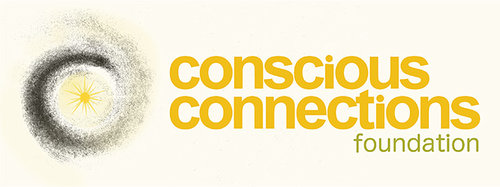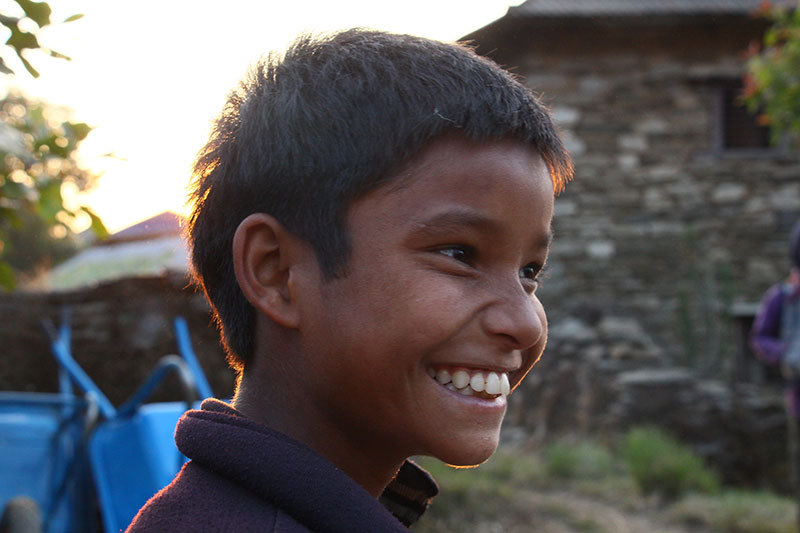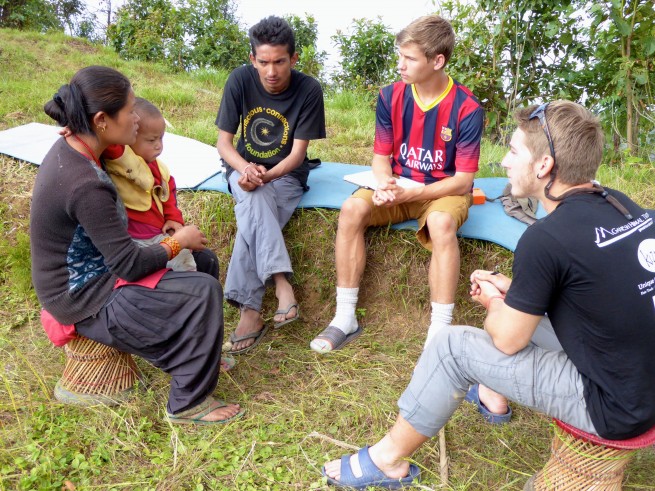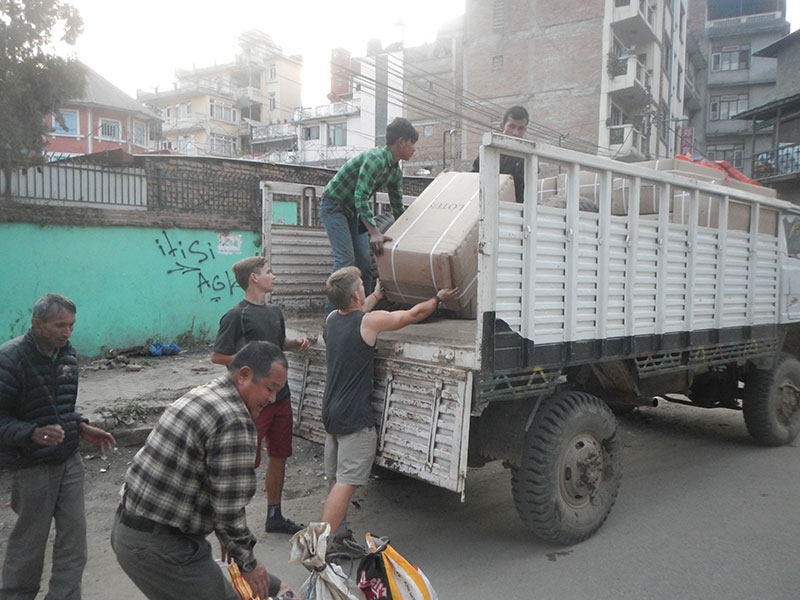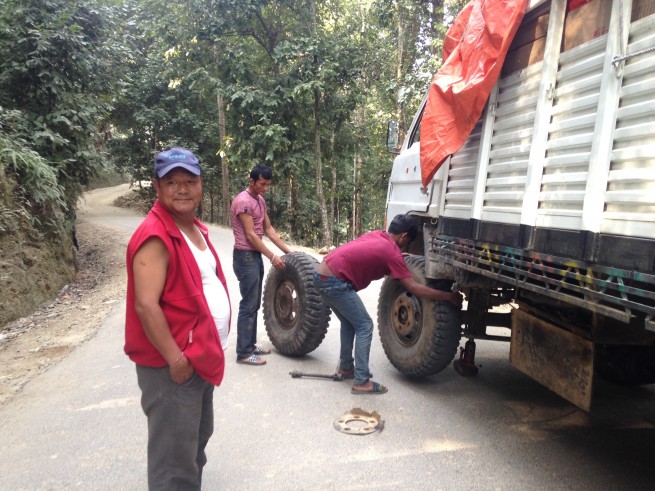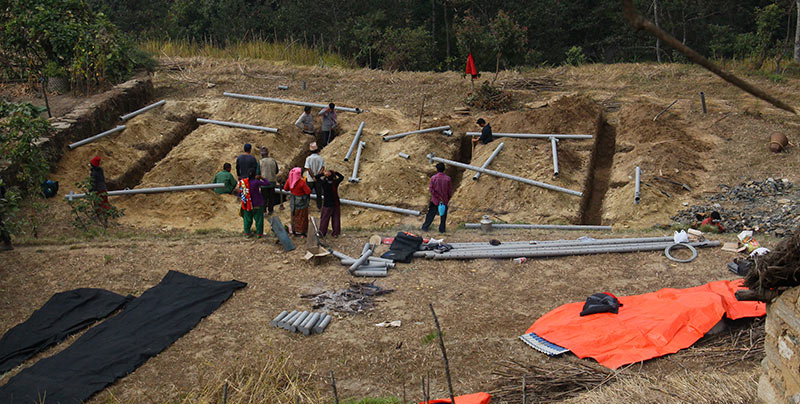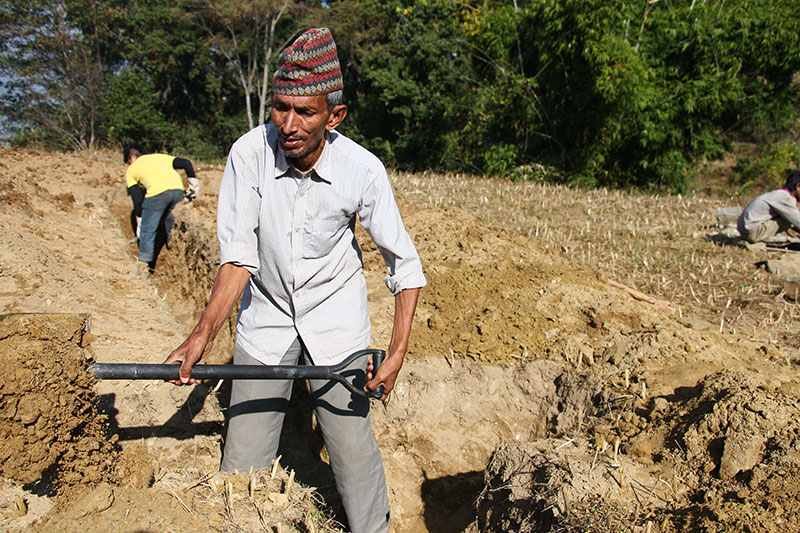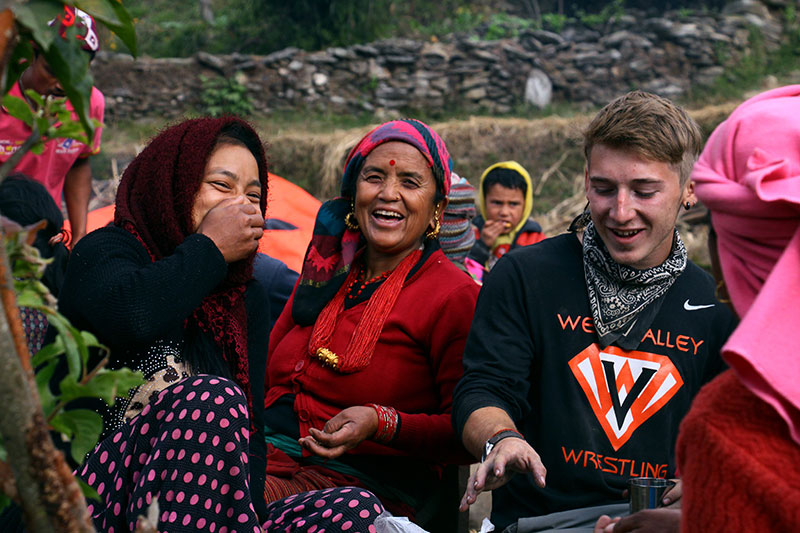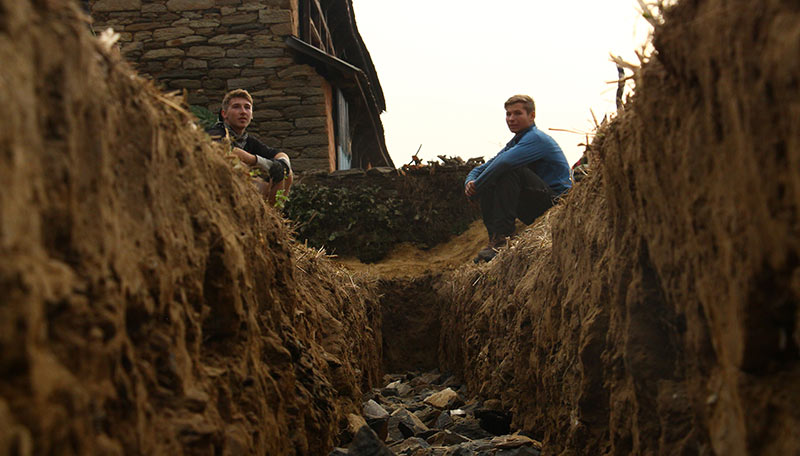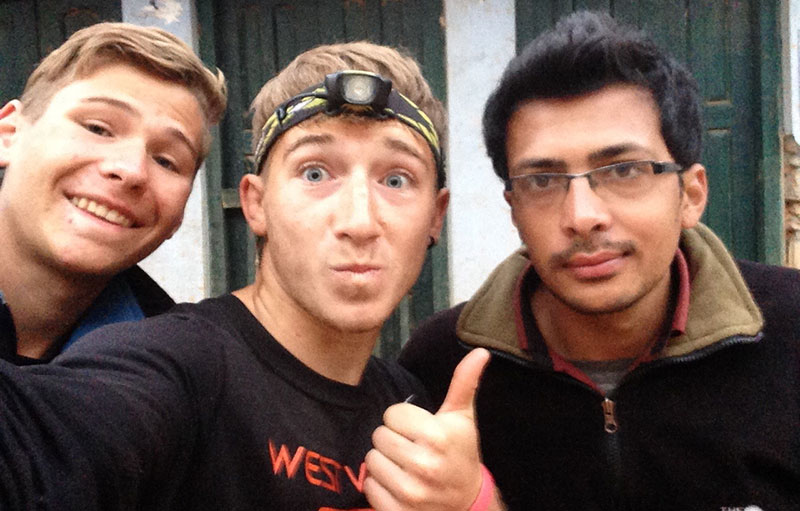Our apologies for being somewhat remit on our blogging lately! Our intentions, I assure you, where not to keep you in the dark, and our recent online absence was certainly not due to a lack of entertaining and important material. On the contrary, in the past several months we have encountered enough strange, thrilling, stressful, and outrageous, scenarios to fill an entire book!
Hindsight, as always, reveals many consequential mistakes, and unobserved details here and there which, had they been utilized, would have eased our way. Looking back now, it still amazes me that everything more or less came together in the end. The future may show that other, less forgiving mistakes were made, yet, at this moment and with my current perspective, I am incredibly proud of the work which our amazing CCF team has relentlessly put into its projects. Moreover, the success we have to show for this work is truly astounding. But I’m getting ahead of myself… before I dive into the process of our re entry and the chaos since, this work and the subsequent results warrant a detailed description in themselves.
To begin, let me give a little background: As those of you who attentively follow our blog will know, in the end of October, Denise Attwood, Ric Conner, Sita Gurung, Grant, and I all converged in the village of Dadagaun: home of Baseri Clinic. In our brief visit, it became clear how important the clinic was to the villagers of not only Dadagaun, but those from Majuwa, Bhudathum, Dadje, Barlang, and Kattike as well. Seeing the emotional attachment and ownership that these people clearly felt towards their clinic was remarkable, it left no doubt that the Baseri Clinic would have to be rebuilt, and rebuilt but better than ever before. Yet in doing so, we would have to begin from square one: new land would have to be purchased, new supplies obtained, and a new clinic built with an earthquake resistant method.
In recent months, through the superhuman effort of Sita Gurung, and in yet another volume’s worth of trials and tribulations, CCF successfully obtained a beautiful 8183.8 Square foot plot of land which will serve to house the Baseri Clinic 2.0! Our initial thought had been to reconstruct the Clinic out of a new, earth friendly and earthquake resistant alternative building technique known as earthbag. Over the course of the past two and a half months, we had talked with experts, attended classes, and even spent close to ten days studying this method of construction on site, all to the point where the entire Board of CCF was chomping at the bit to see this earthbag in action. However, before we committed to something as drastic as the construction of a seven room primary health care facility, we needed to know that this was a viable building method for a village as remote as Baseri. To put this question to the test, it was decided that CCF would fund the construction of two model homes in Baseri out of earthbag, running it through the proverbial gauntlet so to speak. Our goals with this project were threefold: 1, to provide two young families with a safe and comfortable home, fit for village life. 2, to provide the villagers from Baseri and neighboring villages the chance to practice building, and potentially imitate, a reliable, earthquake resistant construction method. 3, to determine the viability and cost of earthbag as a building material in remote locations such as Baseri and thus determine its applicability as the construction method for our clinic.
Although Grant and I had spent a modest amount of time working with earthbag, we were nowhere near qualified to supervise the construction of two entire buildings. As such, we decided to partner with the U.S. based non-profit Good Earth Nepal (GEN) -an organization that specializes in earthbag construction- to oversee this project. Our agreement was this: that we would provide the appropriate funding for materials, labor, and any other on the ground support, while they would provide the ever important “know how” in the form of two engineers and one trained manager. With Denise and Ric gone, much of the logistical facilitation of this project fell to Grant, myself, and our invaluable partner Dhan Bahadur Gurung, a high altitude trekking guide by trade, a highly valued member of the CCF team, and the treasurer of the Baseri Clinic with a meticulous eye for detail.
Photos:
Left: The Model House Construction Committee: (from left to right) Pradip Bandari, Ishwor Basnet, Grant Gallher, Dhane Gurung, Cameron Conner
Middle: Grant, Pradeep, and I interviewing Goma Gurung, a local teacher and future owner of a model earth bag home!
Right: Goma working away on her house!
Together, over the course of just a week and a half, we apprehended the necessary materials, hired the transport (a difficult thing to do in a country with no petrol), organized the labor, and coordinated the transaction of several thousand dollars which would be used to pay for this entire process, a process much easier said than done. Summarized so simply, this week and a half of logistical organization may sound like a walk in the park… HA! No such luck. Rather, this was a seemingly endless period of late night meetings, emergency phone calls, and last minute changes of plan, which set all of us on the constant verge of heart attack. Yet, to my amazement, on the bright and clear morning of the 2nd of December, we found ourselves sailing smoothly out of the smog filled valley, sitting gingerly on top of nearly 5,000Kgs worth of building material stacked precariously aboard our giant truck, and finally winging our way out of Kathmandu: heading once again into the mountains, ready to begin.
Photos:
Left: Loading the truck up with supplies.
Middle: Our cozy home in Baseri with a 5 star view, and just 15 minutes from the worksite!
Right: A quick pit stop at the end of the paved road.
12 hours later, after one flat tire and a broken spring, we rolled into Baseri around 9 o’clock, and dismounted into a congregation of what seemed to be the entire village. With headlamps and solar lights, we, along with everyone from the smallest children to the village elders, made amazingly quick work of the 5,000Kgs, and so we set about greeting the entire village with shouts of “Namaste!” and a customary bow. Though it had been almost exactly one month since we had passed through on our trek, very little seemed to have changed; and as we awoke from our hastily assembled tents the next morning, the incredible view that greeted us was one of villagers going about their normal life amongst the ruins of their old homes. Over the subsequent weeks, this same view greeted us every morning, and not once did it fail to astound me.
Though the successive days did not have their shortage of challenges to overcome, everything, as I mentioned, did come together in the end, and when we left 14 days later, the villagers who worked alongside us had taken our construction advice, made it ten times more effective, and were practically professionals. In that short amount of time, we had managed to dig the entire 2’7” foundation, lay the french drain, fill in the remaining space with a “floating foundation” of loose gravel and rocks, lay the door frames, and even complete close to six courses of earthbags in total. Though each day was filled with its own share of frustration and befuddlement, so too did they present incredible beauty and inspiration. Life in the village is an anomaly of patience and practical pleasures encircled by a modern world filled with an irrational amount of rush and worry. Day by day we worked hauling gravel, pounding dirt, or digging foundations, in the most beautiful place imaginable. At 2 o’clock everyday, the usual 15-25 laborers on the site would all gathered together for a well earned break. Together with grandfathers who could swing a pickaxe like nobody’s business, women who spent the day carrying 50lb rocks on their backs, and young men of our own age, we would sit along a terrace, admiring the day’s work thus far and gratefully snacking on the mokkia (popcorn) made by the Ama’s, or “Mothers” of the village. In broken Nepali, we would try to converse about the goings on around the village, a discussion which eventually deteriorated into peals of laughter at the silly white kids.
Just two short weeks after our harrowing journey to Baseri, Grant, Ram, our good friend Ishwor, and I, found ourselves once again trekking along the hillside, this time in the dead of night, headed down once again. Along the two and a half hour descent to the village of Bhudathum, where the closest bus to Kathmandu could be found, the sun slowly rose behind us, illuminating the tumbling web of vibrant green terraces which spread infinitely below. Seemingly alone on the hillside, the four of us trooped steadily downward, descending from the predawn darkness, through the early morning mist, and into the bright rays that slowly encompassed each one of us. This, to me, was my final goodbye and the end of our adventure. Together we said farewell to the world of patience and practical pleasures, and with each bend in the road we came closer to the world of our own past. Yet as these bends in the road became waves of goodbye, and ultimately, the bright lines along the tarmac, these seemingly separate worlds failed to uncouple.
Above all, however, it is a blessing to have worked with a guy as capable and hardworking as my partner Grant Gallaher; though we had our tense moments, we made an incredible team, and there was no one I would rather have had at my side for three months. Nepal is not an easy place to travel, particularly after a natural disaster and during a crippling blockade, yet Grant passed with grace over all hurdles presented, whether that be cramming on top of a truck filled to the brim with barbed wire for 12 hours, eating dhal bat 24/7, sleeping irregular hours to make late meetings and early transportation, or just putting up with my overbearing temperament for three months straight. I can never express my gratitude to him for all that he has taught and shown me along the way.
Our return home and adventures since this moment are a story in themselves, and as such deserves their own post, and we plan for this to be shortly forthcoming! For the time being however, both Grant and I would like to thank you all sincerely for following along with our adventures. The retelling of our escapades have in some ways kept me sane, and your kind words of encouragement and support have meant the world do us! Until we see you all again… thank you for everything and keep on making those conscious connections.
Cheers,
Cameron
A huge thanks to our good friends Ian Frank and Lucas King-Weber at Short Dog Productions for the wonderful pictures of the Baseri community and our construction process! Check out their facebook page at www.facebook.com/ShortDogProductions
